- EuropaAsiaOrientul Mijlociu
- Șabloane de poștă electronică
- Cum să începeți un email (Sfaturi + șabloane)
Cum să începeți un email (Sfaturi + șabloane)
Descoperiți cum să începeți un email de afaceri profesionist cu sfaturi și șabloane utile. Ghidul include saluturi generice și fraze de deschidere eficiente pentru diverse tipuri de emailuri, ajutându-vă să comunicați eficient.

Cu peste 300 de miliarde de e-mailuri trimise și primite în fiecare zi, e-mailul este un mijloc esențial de comunicare. Să-ți dai seama cum să începi un e-mail de afaceri într-un mod profesionist – mai ales atunci când scrii cuiva pe care nu-l cunoști – poate fi o provocare pentru comercianți, vânzători și reprezentanți ai serviciului clienți.
De fapt, modul în care vă începeți e-mailul poate face diferența între faptul că destinatarul dvs. va închide imediat e-mailul (și îl va șterge) sau îl va citi mai departe. Următorul articol oferă câteva sfaturi despre cum să începeți un e-mail, împreună cu unele dintre cele mai comune saluturi și începuturi de e-mail pe care le puteți folosi în corespondența dvs. de afaceri. De la e-mailuri de tranziție la e-mailuri de networking, a avea la dispoziție șablonul potrivit poate fi o binecuvântare. De asemenea, vă acoperim și dacă aveți nevoie de șabloane de încheiere a e-mailurilor de afaceri.
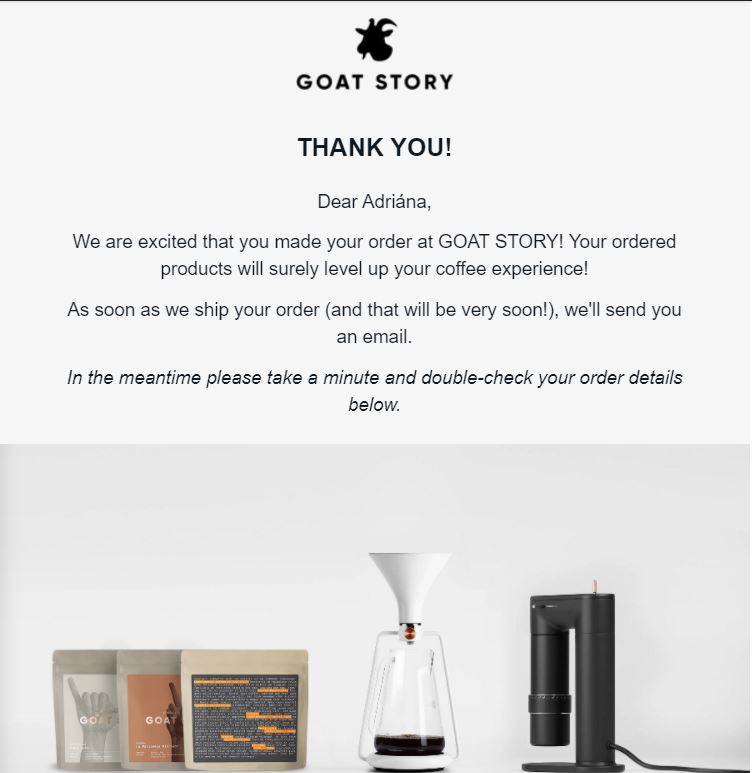
Ce trebuie să includeți la începutul emailurilor
1. Saluturi și introduceri
Începeți cu un salut adecvat, în funcție de cât de formal trebuie să fiți. Includeți întotdeauna numele destinatarului (dacă îl cunoașteți) pentru a face salutul mai plăcut. Nu în ultimul rând, verificați din nou dacă ați scris corect numele destinatarului. Sfatul nostru profesional? Copiați și lipiți numele lor așa cum se vede în emailurile, semnăturile de email sau site-urile web anterioare pentru a vă asigura că nu faceți o greșeală de scriere.
2. Introducere și motivul pentru care se scrie (dacă este necesar)
Când scrieți cuiva pentru prima dată, prezentați-vă și includeți o propoziție concisă despre obiectivul emailului. Această propoziție poate determina dacă destinatarul vă va citi emailul sau îl va ignora, deci asigurați-vă că scopul dvs. este clar și convingător.
Dacă aveți prieteni comuni, colegi sau cunoștințe, menționați-i, deoarece acest lucru vă poate crește șansele de a primi un răspuns. De exemplu, ați putea face o scăpare subtilă de nume de genul: „Bună [Nume], m-am întâlnit cu prietenul nostru comun Richard (de la [Companie]) în weekend și a menționat că aveți nevoie de un nou instrument de asistență, cum actualul furnizorul nu o mai realizează …”
3. O frază de deschidere / urări de bine (opțional)
Dacă nu i-ați scris destinatarului de mult timp sau dacă aveți o relație ocazională cu destinatarul, ar fi indicat să includeți o notă rapidă și pozitivă precum „Sper că vă merge bine.” Aceasta poate seta tonul potrivit pentru restul emailului.
Alternativ, dacă destinatarul a distribuit câteva actualizări pe LinkedIn sau alte rețele de socializare, nu ezitați să îi felicitați pentru cele mai recente realizări (atât personale, cât și profesionale). Ați putea spune ceva de genul „Felicitări pentru promovare” sau „Felicitări, este interesant să vedeți [Compania beneficiarului] achiziționând un client atât de important precum [Compania].”
4. O linie de mulțumire (opțional)
Pe baza contextului, puteți adăuga o scurtă linie „mulțumesc” la corespondența dvs. de email. De exemplu, dacă potențialul dvs. client/ clientul dvs. v-a contactat cu o solicitare, „Vă mulțumim că ați contactat” sau „Vă mulțumim că ați contactat [Compania]” este o necesitate. Cu toate acestea, ori de câte ori introduceți o notă de mulțumire, este important să o personalizați, întrucât notele de mulțumire standard (cum ar fi cele menționate mai sus) sunt puțin prea generice și se pot dovedi reci sau distante.
Prin simpla adăugare a unui nume înainte de linia de mulțumire, mesajul sună mai cald și mai primitor. Iată un exemplu: „Emily, vă mulțumesc foarte mult că ați contactat [Compania] și că ați ridicat această problemă. Aveți dreptate…”
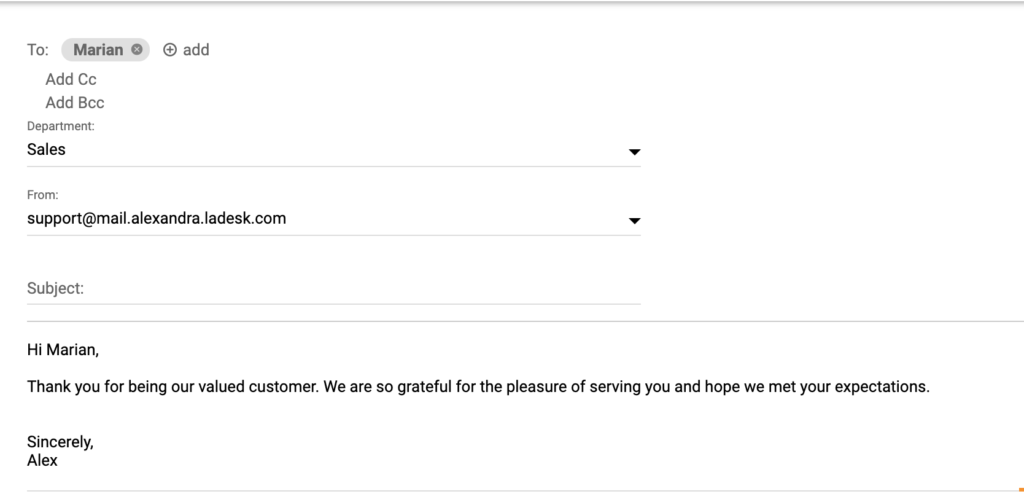
Exemple și șabloane pentru a începe un email
Salutări profesionale de email
„Bună [Nume]” este probabil cea mai frecventă și cea mai utilizată salutare prin email din lumea afacerilor. Acest salut este, în general, recomandat pentru stilurile de comunicare semi-formale și informale. Dacă doriți să fiți puțin mai formal, „Bună” poate fi înlocuit cu „Bună ziua.”
„Stimate [Nume]” este, de asemenea, adecvat atât pentru comunicarea formală, cât și pentru cea informală. Pentru confortul dvs., am pregătit o listă întreagă cu alte felicitări generice din care puteți alege atunci când începeți emailul profesional. Verificați lista:
Atunci când scrieți către unul sau doi destinatari:
- Stimate [Nume],
- Stimați [Nume] și [Nume],
- Bună ziua [Nume],
- Bună [Nume],
- [Nume],
- Hei [Nume],
Atunci când scrieți către trei sau mai mulți destinatari:
- Bună ziua tuturor,
- [Numele grupului sau al echipei],
- Bună echipă,
- Bună ziua tuturor,
- Bună ziua,
- Bună dimineața,
- Bună ziua,
- Bună seara,
Atunci când nu sunteți sigur de numele destinatarului:
- Stimate domn,
- Stimată doamnă,
- Bună,
- Bună,
- Salutări,
- Stimate Manager de angajare,
- Stimată echipă de recrutare,
Fraze generale de începere a emailurilor
După salut, puteți include o scurtă propoziție de începere pentru a vă iniția emailul. Cu toate acestea, cel mai bine este să evitați astfel de propoziții dacă scrieți un email formal sau trimiteți un email rece unui potențial client, deoarece aceștia pot fi prea prietenoși . Iată câteva dintre cele mai frecvente exemple de fraze de începere pentru email:
Hope this email finds you well.
I trust you are doing well.
How’s it going at [Company name]?
It’s great to hear from you.
I’m pleased to hear that…
I hope you enjoyed your weekend.
Hope you’re enjoying your holiday.
I hope you had a great trip.
I hope you’re doing well.
Hope you’re feeling great!
I hope you’re having a great week.
I hope you’re having a wonderful day.
I hope you enjoyed the event.
I hope you enjoyed your vacation.
I’m reaching out about…
I’m wanted to ask about…
I just wanted to send you a brief note about …
Congratulations on [recent accomplishment].
How did [recent project/ event] turn out?
I loved your recent [article/social media post].
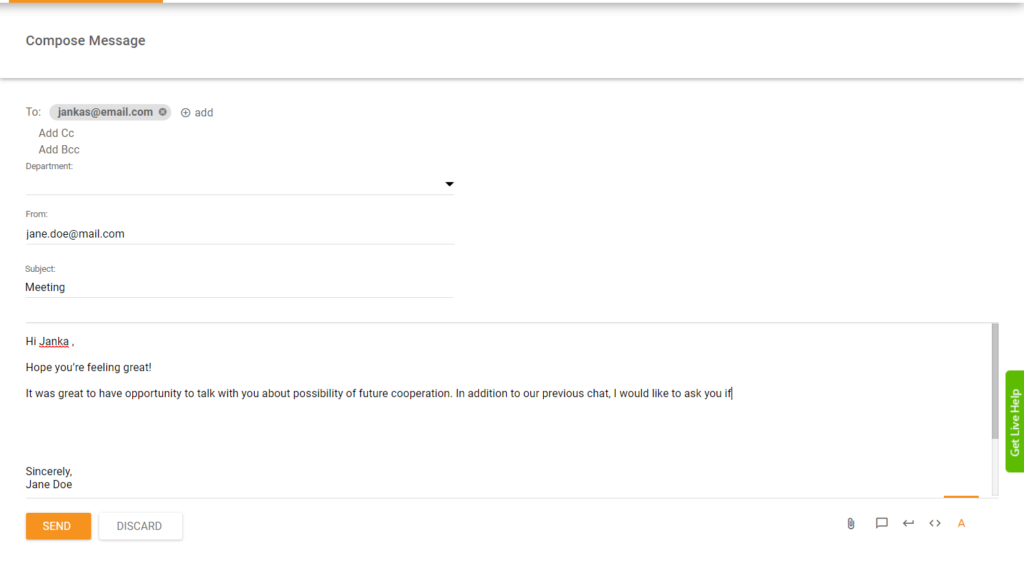
Urmăriți fraze de începere a emailurilor
Dacă nu sunteți sigur ce să scrieți la începutul e-mailului de follow-up, luați în considerare includerea uneia dintre următoarele fraze de deschidere a e-mailului care pot sparge gheața:
As we discussed in our phone call …
As we discussed at our meeting …
As promised, here’s …
I’m checking in on …
Just checking in to make sure that …
Following up on our meeting …
I am writing to follow up on…
I’m getting back to you about…
This is just a quick note to…
This is just a quick reminder…
I wanted to let you know that…
Can you please give me an update on …
I’m writing to remind you about…
It was great to meet you at [event].
It was great talking to you last week.
I’m glad we had a chance to chat at the [event].
It was a pleasure to meet you yesterday.
Fraze de începere a emailurilor răspuns
Atunci când răspundeți unui client sau unui potențial client, în multe cazuri, un scurt „Mulțumesc” este adecvat. Dacă nu sunteți sigur cum să încorporați un „Mulțumesc” sau dacă aveți nevoie de mai multă inspirație, consultați unele dintre alternativele noastre:
Thanks for getting in touch.
Thank you for your message.
Thank you for letting me know.
Thank you for the update.
Thank you for the heads up.
Thanks for keeping me in the loop.
Thanks for the quick response.
Thank you for taking the time to [write to us/give us your feedback].
Thank you so much for getting back to me.
Thanks for getting back to me so quickly.
Thanks for your feedback on …
I’m sorry it took me so long to get back to you.
I apologize for the late response.
I’m sorry it’s been so long since my last email.
Sorry for my late reply.
Could you please clarify [something]?
Could you explain what you mean by [something]?
Could you give us some more details on…?
Cum să începeți la rece un email de vânzări
Când scrieți un email la rece unui potențial client, primul paragraf va stabili dacă potențialul dvs. client va considera că mesajul dvs. merită citit, deci este important să impresionați și să ieșiți în evidență. Iată câteva exemple de ceea ce puteți include în paragraful introductiv:
“My name is [Name], and I am the marketing director for [Company]. [Mutual connection] recommended that I get in touch with you regarding …”
“My name is [Name], and I’ll keep this quick. I’m the founder of a software tool that helps businesses like yours achieve [specific goals] through [product benefits].”
“My name is [Name] and we work with companies like [Company 1], [Company 2], and [Company 3] to improve their [sales/ marketing efforts/ customer service, etc.].”
“[Name] from [Company] here. I saw you recently [visited our website/ downloaded a whitepaper, etc.]. I’ve worked with similar companies in [field/ industry] and I thought I’d reach out.”
“My name is [Name] and I’m with [Company]. We have recently launched a new solution that [what your solution does]. Based on your online profile [profile link], it appears that you might be the right person to talk about [problem solved by your product].”
Dacă doriți să aflați mai multe, consultați șabloanele de e-mail de vânzări la rece.
Cum să începeți un email de urmărire a vânzărilor
Urmărirea unui prospect, mai ales dacă acesta nu a răspuns la mesajele anterioare, poate fi dificilă. În acest caz, încercați una dintre aceste propoziții de deschidere a e-mailurilor eficiente… s-ar putea să vă fie de ajutor!
“I trust that you have had an opportunity to read my previous email and look at our website, so I figured it’d be worth checking in with you again.”
“I sent you an email a while ago about [Company] and how I think we could be a great fit for you and [Company]. Did you know that our clients report [a **% increase] in [sales] when they use our [software/ platform/ tool]?”
“I hope I’m not overstepping, but I see that you have read my previous email and visited our site (the wonders of modern technology). I think this will be a good time for us to take the conversation further. What do you think? Are you available for a quick call on [date and time]?”
“I know how busy you must be managing your team and helping them increase [job function]. I sent you some information about [Product] a while ago and I thought this might be a good time to give you a practical demonstration.”
“I’m writing to follow up on my email as I didn’t hear back from anyone on the team. As I stated in my previous message, I believe [Product] can greatly improve how you do [what your product helps with].”
Dacă doriți să aflați mai multe, consultați șabloanele de e-mail de urmărire a vânzărilor.
Design your own templates
LiveAgent gives you the power to design your own customer email templates, thus helping you to improve the customer service. Curious about all the opportunities?
Cum să începeți un email de bun venit după cumpărare / client
Ori de câte ori cineva vă cumpără produsul sau se înscrie la serviciile dumneavoastră, ar trebui să îi mulțumiți sau să îi urați bun venit în „familie” pentru a vă asigura că relația dvs. a început bine. Cel mai bun mod de a face acest lucru este să scrieți un e-mail de bun venit care să includă o notă de mulțumire, o scurtă introducere și orice informații utile.
“Thank you for your recent purchase with us! I hope you’re enjoying your [product/ service].”
“Welcome to [Company]! We’re feeling pretty lucky that you chose us, and I just wanted to say thank you on behalf of our whole company.”
“I’m [Name], the founder of [Company] and I’d like to personally thank you for signing up for our service.”
“Welcome to [Product/ Company]. We’re thrilled to see you here! I’ll be your guide during this onboarding period, and my goal is to ensure you have a positive experience and get the most out of our [product/service].”
“Welcome to [Brand]! We’re excited to have you on board and we can’t wait for you to start using [product/ service] and seeing results.”
Nu ezitați să verificați mai multe șabloane de e-mailuri post-achiziție și șabloane de e-mailuri de bun venit.
Cum să începeți un email de serviciu clienți
Aproape fiecare e-mail de serviciu clienți ar trebui să înceapă cu o notă de „Vă mulțumim”, fie că este vorba de un răspuns la o simplă solicitare de serviciu clienți, fie că se răspunde la o reclamație a unui client. Iată cum poate arăta:
“Thanks for reaching out! I’d be more than happy to help you.”
“Thank you for contacting [Company]. My name is [Name] and it would be my pleasure to assist you with …”
“Thank you for writing to us today. I’d be happy to answer those questions for you …”
“Thank you for your inquiry about […]. I’m really sorry to hear that you can’t […] I’m escalating your issue so that someone can take a closer look at what’s going on right away.…”
“Thank you for writing in. This message is to confirm that we’ve received your request, and will be in touch within ** hours with a complete response.”
Dacă doriți să aflați mai multe, consultați șabloanele de servicii pentru clienți.
Cum să începeți un email de scuze pentru clienți
Când răspundeți clienților supărați sau nemulțumiți , asigurați-vă că prezentați empatie și emiteți scuze în numele companiei dvs. Iată cum o puteți face:
“Thanks so much for reaching out about order #[number]. I’m so sorry the product hasn’t worked out for you.”
“I’m so sorry that you had a negative experience with [product/ service/ company department]. I’ve looked into the issue, and it seems that [briefly explain the reason for their bad experience].”
“I am so sorry to hear that you have had such a poor experience with us. Although we strive for 100% customer satisfaction, it’s clear we’ve fallen short in this instance – and that’s unacceptable.”
“I am so sorry to hear that [a brief summary of their bad experience]. That should have never happened, and I completely understand how frustrating this must be for you.”
“Thank you for providing us this feedback. I realize how frustrating it must be to [details of the issue]. We obviously failed this time, and for that, we are very sorry.”
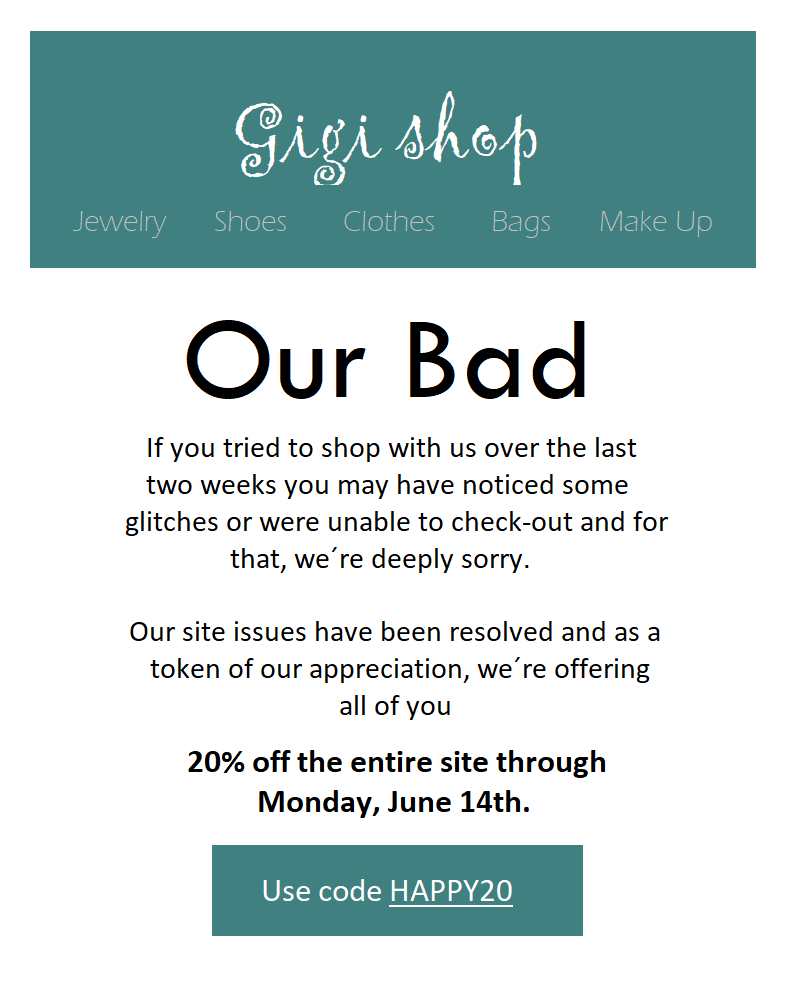

LiveAgent combină interfața excelentă de conversații directe, sistemul de gestionare a tichetelor și automatizarea, toate acestea permițându-ne să oferim asistență excepțională clienților noștri.
Urmăriți cum să scrieți e-mailuri în engleză – Formal, Semi-Formal sau Informal
hi everybody and welcome back to english. for professionals i'm derek and i'm here. with another short lesson for you busy. people in this business english emails. lesson i'm going to show you the. differences between formal. semi-formal and informal emails. [Music]. before we get started if you need. english for work and you're interested. in short lessons to help you with your. business english then subscribe to my. channel now hit the red button and don't. forget to click on the little bell that. way you'll be notified every time i. upload a new lesson and now. let's get started. we're going to do three things in this. lesson. first of all we'll talk about the. different kinds of people we write. emails to and we'll categorize them into. formal semi-formal and informal after. that i'll show you example emails in. each style and at the end of the lesson. i'll show you lots of extra example. phrases in each style. let's start with formal emails we. usually use a formal style when we write. to new customers suppliers and business. partners and also to people who are in. higher positions managers bosses and. directors. we usually use a semi-formal style with. colleagues we know but not very well and. also with existing customers suppliers. and business partners. we use an informal style when we write. to friends and family and also to. colleagues or business partners we know. very well and work with on a regular. basis. the most common style to use in business. is the semi-formal style but of course. there are exceptions. for example it's quite possible that we. could use an informal style to write to. a customer or a supplier but only if we. know that person very well and if we. have a good and long relationship with. them and one more thing the style you. use also depends on the culture in your. company as well as the business culture. in the countries you work within so you. need to be aware of those factors. and now it's time to look at some. examples we'll start with the formal. style and the email we're going to look. at is a follow-up email after a formal. business meeting with a potential new. business partner. we start with a formal greeting dear. miss amir. first of all i would like to thank you. for the productive meeting on monday it. was lovely to meet you and learn more. about your business here we have formal. phrases like i would like to and it was. lovely to meet you. as discussed in the meeting i am sending. you the additional information about. that you requested i have attached a. document with all of the details and. here we have more examples of very. formal phrases as discussed in the. meeting. that you requested and so on if you. require any further information please. do not hesitate to contact me again a. typical formal style. i look forward to our next meeting on. january 10th. best regards derek callum. i look forward to and best regards our. typical phrases we use to close a formal. email. so there we have the formal style now. let's compare that one to a semi-formal. version of the same kind of email. in this case it's a follow-up email. after a less formal meeting with a. potential new business partner and as. you'll see in a moment we're already. using first names. dear nidra first of all i just wanted to. say thanks for the productive meeting on. monday it was great to meet you and find. out more about your business so here you. can already see a big difference first. of all first names so imagine that first. meeting was less formal and by the end. of the meeting we were using first names. also in that first line we don't have. the i would like to we have i just. wanted to say. and also rather than saying it was. lovely to meet you and learn more about. your business we have the less formal it. was great to meet you and find out more. about your business. i've attached a document with the extra. information about. that you asked for here we see more. examples of a less formal style instead. of i have attached we use the short form. i've attached we don't use words like. additional information or that you. requested we use less formal style extra. information. that you asked for. and now let's look at the last part of. the email please let me know if you need. any more information looking forward to. our next meeting on january 10th regards. derek so again much less formal. please let me know instead of the very. formal please do not hesitate to contact. me if you need any more information. instead of if you require any further. information and also in the closing part. looking forward to instead of i look. forward to. and then we have regards which is. slightly less formal than best regards. so there we can see the differences. between the very formal and the. semi-formal. and as i said before the semi-formal is. the one we use most often in business. correspondence but of course as i said. earlier it always depends on who you're. writing to company culture the business. culture those are things you need to be. aware of. now let's take a look at the comparison. between the semi-formal and the informal. style. this time we have another follow-up. email but it's after a very informal. meeting with a colleague you know very. well. hi tom just a quick mail to say thanks. for the meeting on monday and to send on. that extra info you asked for. see attachment. the first difference we can see here is. in the greeting hi tom hi is less formal. than. deer and then also in the start of that. first sentence just a quick mail to say. this is a typical way to start an. informal email. when you're giving someone information. and then we also have phrases like to. send on that extra info very informal. let's continue if you need anything else. just get in touch so again very formal. expression here just get in touch. see you at the next meeting cheers derek. so typical way to end an informal email. see you at the next meeting. cheers cheers can mean goodbye it can. also mean thank you this is just one. possibility if you want to see more ways. to end an informal email check out my. other lesson. 17 ways to end an email. now it's time for the last part of the. lesson where i show you more examples of. typical email phrases for formal. semi-formal and informal emails. let's start with friendly openings it's. often a good idea to use one of these. after you're greeting and before you say. why you are writing. i hope everything is going well. semi-formal. i hope all's well. and in the informal version. hope all's well or nothing we don't. always need to include a friendly. opening especially to people who we are. writing to on a daily basis or who we. write to. very often. and now an example for saying why you. are writing. i am writing to update you on. semi-formal i just wanted to update you. on. and in the informal version. just wanted to keep you in the loop on. keep you in the loop is a very informal. phrase which means to keep somebody. informed about the latest information. about something. requests. formal style. would it be possible too. semi-formal. is there any chance you can. and the informal can you. making arrangements. i was wondering if you would be. available for a meeting next. semi-formal would you be available for a. meeting next. and informal. can we meet next. confirming arrangements i would like to. confirm our meeting. just want to confirm our meeting. i'll be there. giving information i am afraid i will. not be able to. i'm afraid i won't be able to. and sorry but i won't make it to. and one more example closing line. referring to next contact. i look forward to hearing from you soon. looking forward to hearing from you soon. and. talk to you soon. so that brings us to the end of another. short lesson i hope you liked it and i. hope you found it helpful don't forget. to check out all of my other email. lessons here on youtube. i'll leave a link in the description if. you did like the lesson hit the like. button and share with your friends and. colleagues subscribe to my channel if. you haven't done that and don't forget. to join my email list every two weeks i. send out my free vocabulary email with. additional business english words in the. news and everyday english for you to. learn the link is also in the. description below thanks a lot for. watching and talk to you soon.
Rezumat
Începutul emailului companiei dvs. (mesajul de întâmpinare, linia de deschidere și prima propoziție) este primul lucru pe care îl vede destinatarul atunci când vă deschide emailul. Prin începerea emailului într-un mod profesional, este mai probabil să creați o impresie pozitivă asupra acestora. Salutul pe care îl folosiți și primele câteva propoziții pe care le alegeți pentru începutul emailurilor profesionale de afaceri vor depinde de publicul dvs. și de contextul comunicării dvs. Folosiți mesajele de întâmpinare prin email și frazele de deschidere a emailurilor menționate mai sus ca solicitări ori de câte ori nu sunteți sigur cum să începeți următorul email către un client sau un potențial client.
Nu uitați să vă verificați de două ori e-mailurile pentru a vedea dacă nu aveți greșeli de ortografie sau gramaticale și asigurați-vă că scrieți întotdeauna corect numele destinatarului. Ultimul nostru sfat este de a fi scurt și concis, deoarece nimeni nu dorește să citească e-mailuri lungi. Ajungeți rapid la subiect, folosind tonul corect al vocii, și veți fi perfect.
Master the art of starting emails with LiveAgent's how-to-start-an-email templates.
Our expertly crafted templates provide you with effective and attention-grabbing opening lines that will engage your recipients from the get-go.
Descoperiți caracteristicile cuprinzătoare ale LiveAgent, un program complex de birou de asistență multicanal. Gestionați eficient solicitările clienților cu funcții avansate precum sistem de ticketing, detectarea coliziunilor între agenți, jurnal de audit și distribuirea automată a tichetelor. Îmbunătățiți productivitatea cu mesaje planificate și organizați contactele și companiile cu ușurință. Explorați soluția completă pentru optimizarea serviciului de asistență.
You will be
in Good Hands!
Join our community of happy clients and provide excellent customer support with LiveAgent.

Pagina noastră de internet utilizează module cookie. Continuând utilizarea acesteia, ne oferi permisiunea să instalăm module cookie așa cum este detaliat în politica privind confidențialitatea și modulele cookie.
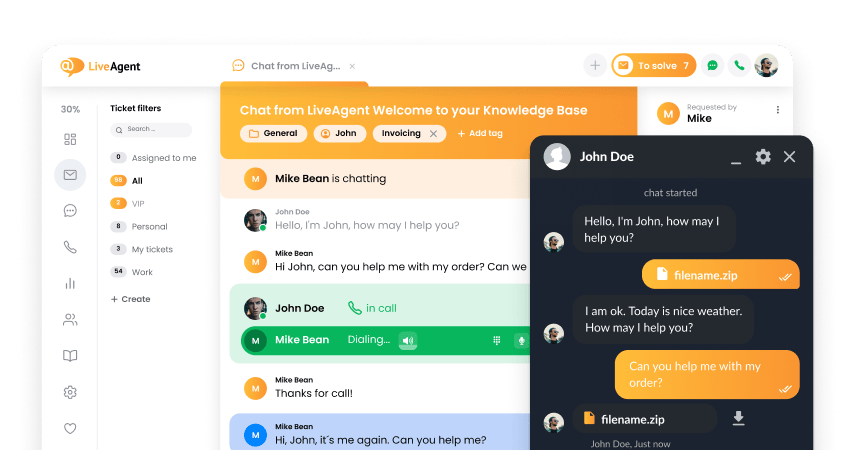
- How to achieve your business goals with LiveAgent
- Tour of the LiveAgent so you can get an idea of how it works
- Answers to any questions you may have about LiveAgent

 Български
Български  Čeština
Čeština  Dansk
Dansk  Deutsch
Deutsch  Eesti
Eesti  Español
Español  Français
Français  Ελληνικα
Ελληνικα  Hrvatski
Hrvatski  Italiano
Italiano  Latviešu
Latviešu  Lietuviškai
Lietuviškai  Magyar
Magyar  Nederlands
Nederlands  Norsk bokmål
Norsk bokmål  Polski
Polski  Русский
Русский  Slovenčina
Slovenčina  Slovenščina
Slovenščina  简体中文
简体中文  Tagalog
Tagalog  Tiếng Việt
Tiếng Việt  العربية
العربية  English
English  Português
Português 


